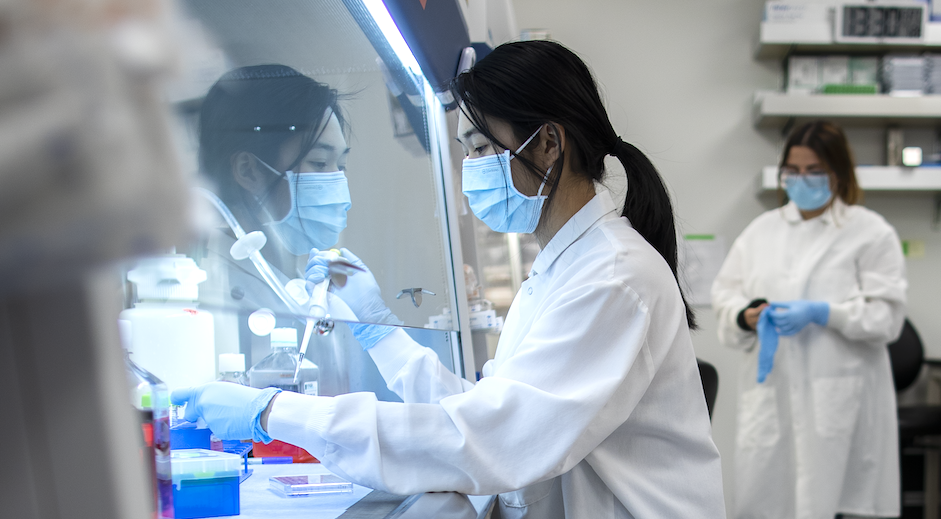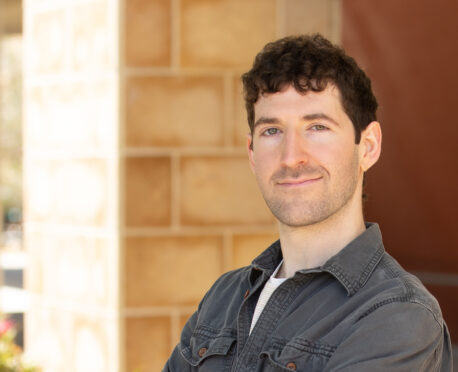LA JOLLA—Studying the immune system means venturing into uncharted territory, leading explorations of the countless immune cells and genetic players in the body. In this intense field, three La Jolla Institute for Immunology (LJI) scientists have consistently made breakthroughs that have pushed biomedical research forward.
LJI Professors Shane Crotty, Ph.D., Bjoern Peters, Ph.D., and Alessandro Sette, Dr. Biol. Sci., were named “Highly Cited Researchers” this week by Clarivate. The honor recognizes researchers whose peer-reviewed studies have been cited most often by their scientific peers. This means Crotty, Peters and Sette have been in the top 1% of citations for their field of study between 2009 and 2019.
“The La Jolla Institute is a champion of providing reliable scientific facts,” says Sette. “And being Highly Cited means scientists at LJI are being cited in the scientific literature.”
These three honorees are not slowing down. In 2020, their labs came together to co-lead crucial research into how immune cells respond to SARS-CoV-2, the virus that causes COVID-19.
“One reason we’ve been so successful is because LJI is a really collaborative place, so it’s set up for doing immunological research quickly,” says Crotty. “You need people with different expertise to see how the different parts of the immune system fit together.”
Shane Crotty: Advancing vaccine research
For Crotty, being on the Highly Cited Researchers list shows the value of patience. He reminds his younger lab members that vaccine research is about the long game. “People in the lab usually have a couple different projects because you can never tell what is going to succeed and what is going to fail—or when it’s going to fail,” says Crotty.
But every bit of success in his lab advances the life-saving science of vaccines. As part of The Scripps Consortium for HIV/AIDS Vaccine Development (CHAVD), Crotty’s lab has published work showing not just the most promising HIV vaccine candidates but also the best strategies for administering HIV vaccines.
“I’ve tried to have my lab focus on the most important problems that are holding back the vaccine research field,” Crotty says. “We’re working on the cutting-edge of what’s known.”
This is Crotty’s fifth year on the Highly Cited Researchers list, and it’s unlikely to be his last. In addition to his COVID-19 research in 2020, Crotty’s lab published an Immunity paper shedding light on the effect of antigen valency on B cell response, which could be key to understanding how to improve vaccine design to fight diseases such as HIV.
Bjoern Peters: Developing powerful bioinformatics tools
As a leader in the development of bioinformatics tools, Peters’ lab is in a unique position to tackle a huge range of questions in immunology. His work to predict immune cell responses to antigens has advanced the field and shown how the bioinformatics community can come together to quickly solve problems.
Since 2003, Peters and Sette have co-led the Immune Epitope Database (IEDB) a freely available resource funded by the National Institutes of Allergy and Infectious Diseases (NIAID). “The IEDB has become an essential set of tools for everyone who’s involved in vaccine development, targeting immune-specific responses in cancer, in autoimmune disease, infectious disease and cancer,” says Peters. “People use the IEDB and the tools that come with it for new and innovative studies in things we haven’t even thought about.”
In the end, Peters aims to help combine bioinformatics resources with in-the-lab experimental work. “That is an area we really need to bridge,” says Peters. For example, his lab is working to take experimental data and better predict vaccine outcomes. The lab was originally using this approach to investigate pertussis vaccines, but they expanded the work in 2020 to better understand COVID-19 vaccines responses.
“We are trying to learn from what happens immediately after vaccination to then predict what will happen long-term after,” says Peters. “Can we use that data to then guide public health policy?”
Alessandro Sette: Uncovering immune cell targets
Sette is celebrating his third year on the Highly Cited Researchers list. “It’s certainly an honor to be on this list,” he says. Sette is a world leader in studying T cell responses. His lab has investigated how T cells target Zika virus, Mycobacterium tuberculosis and many other pathogens, as well as common allergens.
This research can sometimes lead to unexpected avenues. In a 2017 Nature study, Sette’s Lab reported that T cells in Parkinson’s patients recognize a key protein called α–synuclein. This means Parkinson’s disease may be thought of as an autoimmune disease. A follow up 2020 study added further evidence for self-reactive T cells as a driving force in disease onset.
“In the end, nature always teaches you something new, something unexpected,” says Sette.
Sette has also established a lab with the tools to quickly respond to emerging diseases. He was one of the first researchers in the United States to start studying blood samples from COVID-19 patients to better understand their immune response. This research, co-lead by Crotty and Peters was published in Cell in May 2020, and was held up by NIAID Director Anthony Fauci, M.D., in a Congressional hearing as “work we really need to pursue.”
As co-leader of the IEDB alongside Peters, Sette is a strong supporter of making key research tools open to the scientific community. One philosophy he shares with lab members is the importance of publishing data on any projects they do. “You may be doing fantastic work, but if the world doesn’t know about it, the impact is limited,” he explains.





